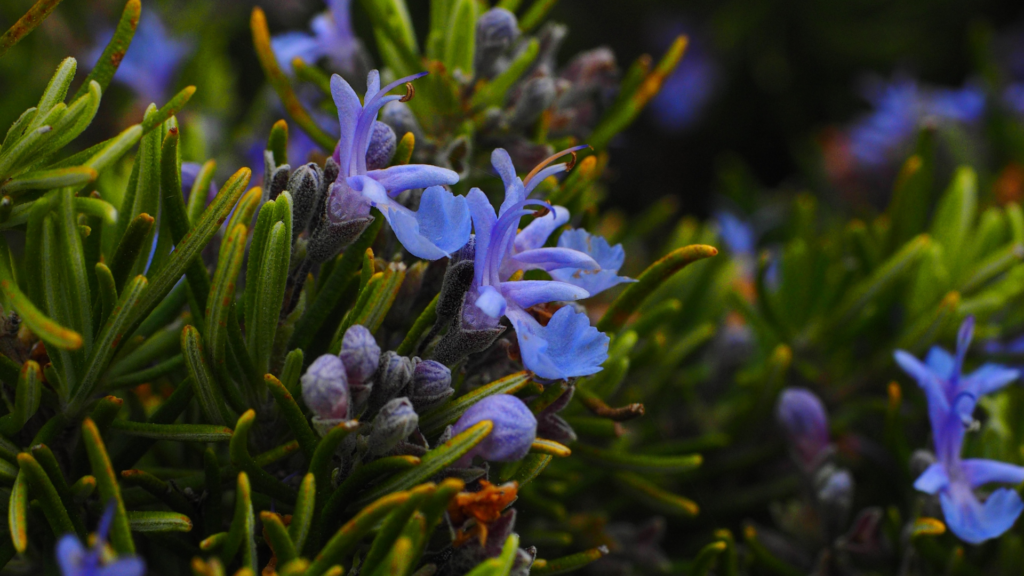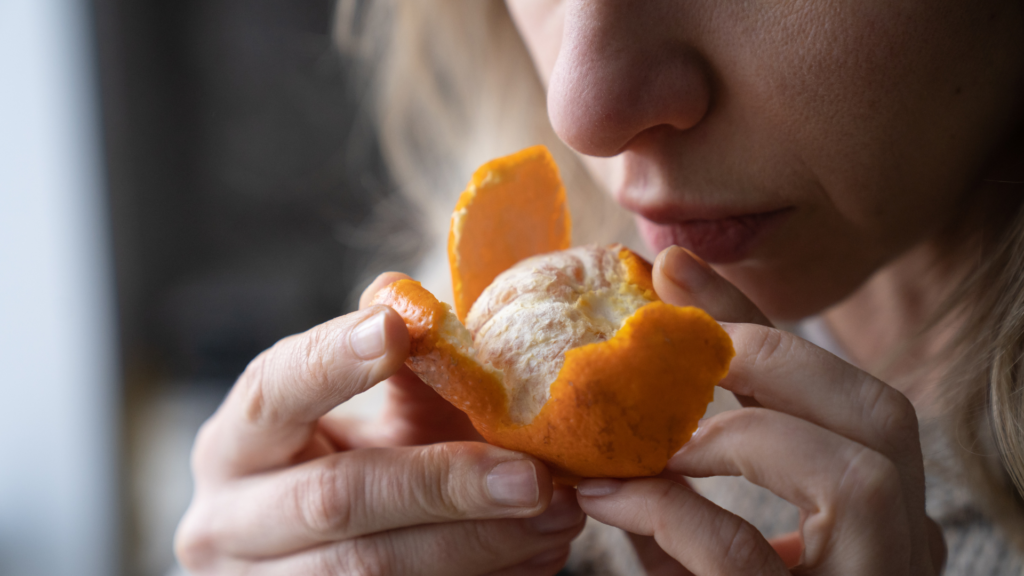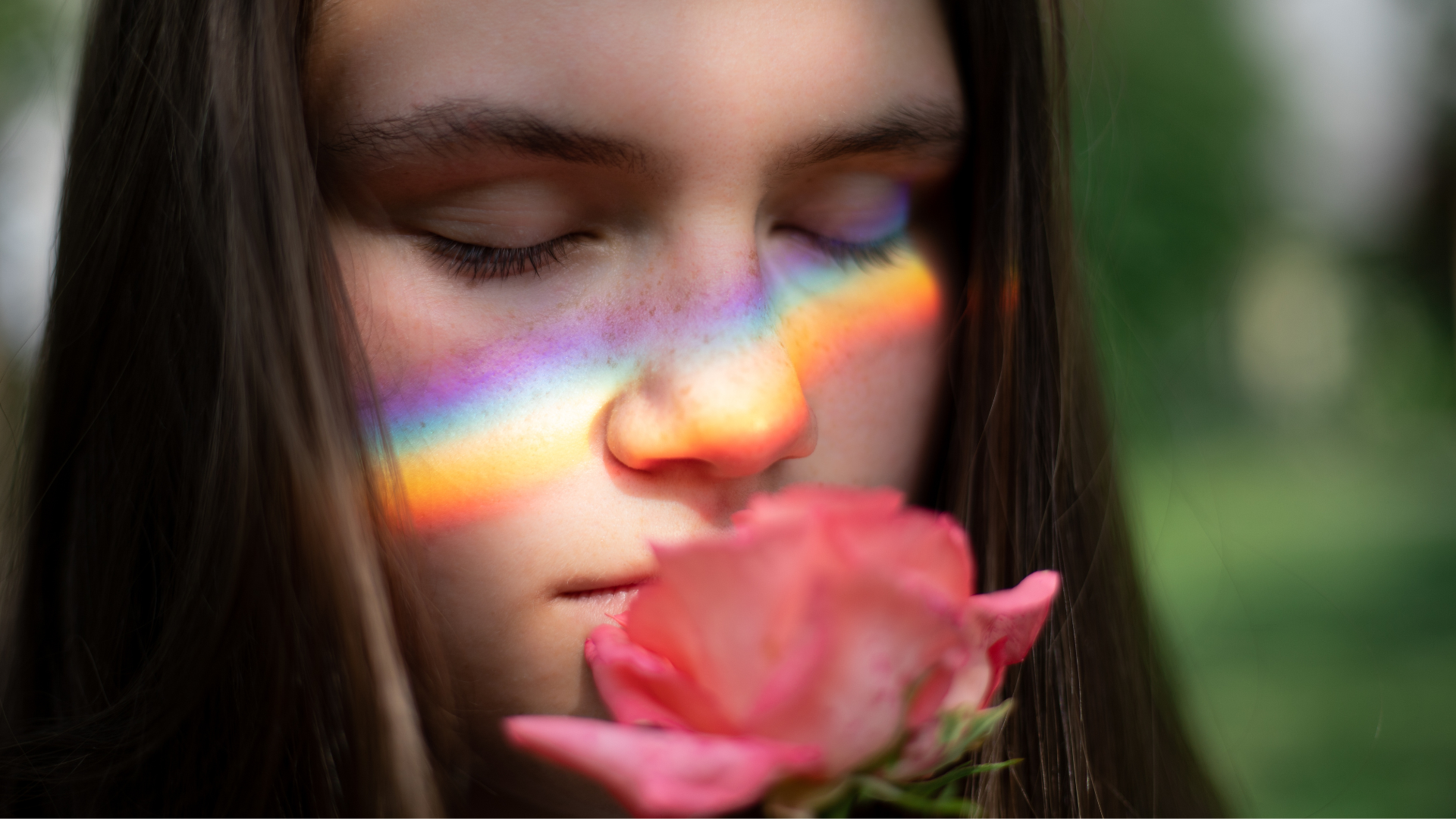Our senses shape how we encounter the world, but it is language that teaches us how to make sense of it. Lately, I’ve been dwelling on the quiet distinction between smelling a scent and feeling one. The thought first stirred when I came across a linguistic curiosity: in some languages, there is no direct equivalent of the verb “to smell.” Instead, people say to feel the smell. At first, it struck me as a charming curiosity. But the more I sat with it, the more it revealed. What if this wasn’t just a turn of phrase, but a doorway into another way of being with aroma?
In English, to smell is often passive. A fleeting gesture. We catch a whiff of blooming flowers, coffee, or rain on warm pavement, and the moment slips away. It lingers only long enough for us to name it, then fades.
But when scent is framed as something we feel, it becomes embodied. Lived. It invites us to sense with more than our nose, and with memory, emotion, intuition. It reminds us that aromatic experiences are not just chemical signals; they are like personal thresholds. Portals to the inner self.
So I ask again: do we simply notice scents, or do we truly experience them?
Why scent feels so personal?
Scent is the oldest of our senses, and evolutionarily speaking, it predates sight and sound. Its pathways are directly wired to the limbic system, the part of the brain responsible for emotion and memory (Herz, 2016). This makes smell uniquely powerful: it bypasses the more analytical parts of the brain and affects us almost instantly, often without conscious thought.
Unlike visual or auditory information, which we tend to interpret and contextualize before reacting, scent moves differently. As Shepherd (2004) explains, olfactory signals reach the brain through a “primitive” system that evolved to process information rapidly and emotionally. That’s why the scent of a particular cologne can unexpectedly transport us to a long-forgotten summer or why the smell of the sea breeze can evoke calm before we’ve had time to think.
When we stop merely smelling and start feeling a scent, our relationship with aroma deepens.
Essential oils, for example, do more than just smell pleasant. They can influence our mood, focus, and even physiological responses. Research has shown that Rosemary essential oil (Salvia rosmarinus ct. cineole) may enhance memory and cognitive performance (Moss & Oliver, 2012). In clinical settings such as hospice care and trauma recovery, olfactory interventions have been used to ease anxiety, foster a sense of safety, and support emotional regulation (Daniels & Vermetten, 2016).
Reframing aroma as something we experience, rather than just detect, invites a more embodied way of relating to the world. It asks us to be present. To allow scent to guide us inward, toward memory, emotion, and healing.

The wholeness of essential oils
Essential oils are often called the “soul” of plants.
While not a scientific term, this metaphor speaks to something many aromatherapists and plant workers instinctively recognize: that beyond chemistry, there is presence. There is a story. There is something sacred that defies measurement.
Each essential oil is a kind of olfactory symphony, and an intricate composition of volatile compounds that work in synergy.
Lavender (Lavandula angustifolia), for instance, contains linalool and linalyl acetate, molecules known for their calming, anti-inflammatory, and neuroprotective properties (Kuroda et al., 2005). But lavender cannot be reduced to these constituents alone. But lavender cannot be reduced to these constituents alone. It holds the memory of sun-soaked Bulgarian fields (or Alpine meadows, depending on where it grew), its essence shaped by soil, wind, and light. It carries not just chemistry, but a sense of place, purpose, and presence. Not to forget the deep tradition of healing across cultures and time.
When we merely smell an essential oil, we register its presence. But when we choose to feel it, we allow ourselves to be moved by it.
It becomes more than aromatic. It becomes relational. It speaks to the body, yes, but also to emotion, to memory, and spirit.
This, perhaps, is the quiet power of aromatherapy.
Not just in the act of inhalation, but in the invitation to experience something whole. Something that touches us, and transforms us, from within.
A deeper way to perceive scent
The ancient Greek philosopher Aristotle believed that perception is not merely something that happens to us; it is something we do. In De Anima (On the Soul), he argued that all sensory experience requires active participation.
This applies beautifully to scent: smelling may be passive, but feeling a scent is intentional. It is a conscious act of engagement.
French philosopher Maurice Merleau-Ponty later expanded this view, suggesting that perception is not about gathering data, but it’s a living experience that connects body, mind, and the world around us. Of all the senses, smell may be the most dissolving: it blurs the line between “me” and “everything else.” When we feel an aroma, we do not simply observe it, we become part of it. The scent enters us, pulls memories from the past, shifts emotions in the present, and subtly shapes our very being.
The Stoics, too, saw perception as a gateway to self-mastery. True wisdom, they taught, begins with awareness, paying attention to how we engage with the world. Scent, when approached with intention, becomes more than sensation. It becomes a tool for reflection, grounding, and inner transformation (Robertson, 2016).
This idea finds echoes in contemporary mindfulness. Practices developed by Jon Kabat-Zinn and others emphasize the senses as anchors to presence, ways to return to ourselves amid a distracted world (Kabat-Zinn, 2005). When we slow down and allow ourselves to feel an aroma, not to analyze it, but to meet it fully, we enter a different kind of awareness.
In that space, scent becomes more than a fragrance.
It becomes a guide. A companion. A quiet teacher inviting us to come home to ourselves.
Connection of smelling vs. feeling
The difference between smelling a scent and feeling it is like the difference between noticing something and experiencing it. Smelling is an act of recognition. We identify an aroma, name it, and move on. Feeling, on the other hand, is a deeper engagement. It’s how a scent touches us: how it stirs emotion, shifts our thinking, or awakens something quiet and unspoken within.
When we smell an essential oil, we are observers.
When we feel it, we become participants.
Take Rose essential oil (Rosa × damascena). If we simply smell it, we may describe its floral sweetness, its warm, powdery softness. But when we feel it, something else emerges, this time something subtler. Love. Gentleness. A soft opening of the heart. For centuries, roses have been associated with compassion, forgiveness, and self-acceptance. In many spiritual traditions, it is linked to the heart center, a place of emotional healing and inner peace.
This is the difference between a casual encounter and a transformative experience.
How to stop smelling and start feeling?
We move through life so quickly, rushing from one task to the next, that we rarely pause to truly experience scent. But when we slow down and engage with intention, aroma becomes a guide: to presence, to healing, to deeper connection.
Here are some gentle ways to shift from passive smelling to active feeling:
- Pause and set an intention. Before you reach for an essential oil, take a moment to arrive. Close your eyes, breathe deeply, and center yourself. Then set a simple intention, something like “I welcome calm” or “May this scent guide me inward.” Intention softens the space and invites receptivity.
- Engage with the aroma fully. As you inhale, notice more than just the scent. Tune into its texture: is it sharp, soft, warm, or cool? Does it linger or expand? How does it move through you? Pay attention to any emotions, bodily sensations, or memories that arise. Let the aroma speak in its own language.
- Journal your experience. Writing bridges the sensory and the symbolic. After your aromatic encounter, spend a few minutes reflecting: what did you feel? Where in your body did you sense it? Did the scent evoke an image, a color, a memory? Putting it into words can deepen integration and self-awareness.
- Experiment with combinations. Essential oils, like emotions, rarely exist in isolation. This time, try combining them not by textbook logic but by intuition. What feels right in this moment? What calls to you? That’s how I discovered that thyme and jasmine, a very unlikely pair, create the perfect emotional resonance for me.
- Create a ritual. If you are comfortable with it, transform your aromatherapy practice into something sacred. Light a candle. Play gentle music. Place your blend on your wrists before meditation. Ritual brings rhythm and reverence. It allows the ordinary to become luminous.

The evolution of the self through aromas
Aromatherapy is more than a momentary experience, it is a journey of personal evolution. Scents don’t just touch us in passing; they shape our emotions, memories, and inner landscapes over time.
Because smell is directly linked to the limbic system, essential oils hold the power to create subtle yet lasting shifts in mood, behavior, and consciousness.
A deep inhale of Frankincense (Boswellia carterii) might begin as a woodsy, resinous note. But when truly felt, it unfolds into something vast, like a starry sky at midnight. It roots you in your body while lifting you toward the divine. It humbles. It opens.
Sweet Orange (Citrus × sinensis) may smell bright and zesty at first, but it can also feel like sunlight on the skin, like childhood joy, or the soft breeze of a new beginning.
And Scotch Pine (Pinus sylvestris) may seem like a simple forest scent. But when allowed to move through you, it awakens something primal. It reconnects you to the wildness within, to soil, to breath, to the quiet power of rootedness.
The shift is subtle but profound. It’s not just about how we perceive scent, but about how we let scent change us.
When we allow aromas to speak to us, when we feel them rather than smell them, we begin to listen inward. And in that listening, we transform.
Through scent, we remember who we are.
Through scent, we return to ourselves.
The personal and cultural dimensions of scent
That said, it’s essential to remember that the way we experience scent is deeply personal and never universal.
The emotions, memories, and associations tied to a particular aroma vary from person to person. They are shaped by our individual histories, nervous system states, health conditions, and the cultures we come from.
Jasmine (Jasminum spp.), for example, may symbolize sensuality, joy, and celebration in one tradition, while in another, it is a flower of mourning and remembrance.
Frankincense (Boswellia spp.), which is widely used in Christian, Islamic, and Hindu rituals, carries different spiritual resonances depending on the context: purification, divine presence, grief, or transcendence.
Even something as seemingly simple as a citrus oil can feel uplifting to one person and overstimulating to another.
This cultural and personal lens also shapes how we feel an aroma. It reminds us that scent is not only chemical, but relational. It reflects not just the oil itself, but the person encountering it.
That’s what makes the aromatic experience so intimate, so unique.
Embracing the evolutionary power of aromas
The shift from smelling to feeling is more than a linguistic curiosity, it is an invitation to a deeper sensory experience. Imagine how your relationship with aromatherapy might change if, instead of simply identifying scents, you allowed them to move through you, stir emotions, and become part of your inner landscape.
Aromas do more than linger in the air. They shape us, awaken memory, and quietly guide us toward transformation.
So the next time you inhale an essential oil, pause.
Don’t just smell it. Feel it.
Let it wrap itself around your senses, stir something deep within, and lead you toward healing, reflection, and self-discovery.
You may be surprised by how much can shift with a single breath.

Konstantyn Petertil
Aromatherapy specialist and writer exploring the sacred, scientific, and sensory dimensions of scent.
References
Aristotle. (1931). On the soul (J. A. Smith, Trans.). The Internet Classics Archive. http://classics.mit.edu/Aristotle/soul.html (Original work published 350 B.C.E.)
Daniels, J. K., & Vermetten, E. (2016). Odor-induced recall of emotional memories in PTSD—Review and new paradigm for research. Experimental Neurology, 284(Pt B), 168–180. https://doi.org/10.1016/j.expneurol.2016.08.001
Herz R. S. (2016). The Role of Odor-Evoked Memory in Psychological and Physiological Health. Brain sciences, 6(3), 22. https://doi.org/10.3390/brainsci6030022
Kabat-Zinn, J. (2005). Full catastrophe living: Using the wisdom of your body and mind to face stress, pain, and illness. Delta Trade Paperback/Bantam Dell.
Kuroda, K., Inoue, N., Ito, Y., Kubota, K., Sugimoto, A., & Masuda, H. (2005). Psychological and physiological effects of inhalation of essential oils. Chemical Senses, 30(Suppl 1), i268–i269.
Moss, M., & Oliver, L. (2012). Plasma 1,8-cineole correlates with cognitive performance following exposure to rosemary essential oil aroma. Therapeutic Advances in Psychopharmacology, 2(3), 103–113. https://doi.org/10.1177/2045125312436573
Robertson, D. (2018). How to think like a Roman emperor: The Stoic philosophy of Marcus Aurelius. St. Martin’s Press.
Shepherd, G. M. (2004). The synaptic organization of the brain. Oxford University Press.
